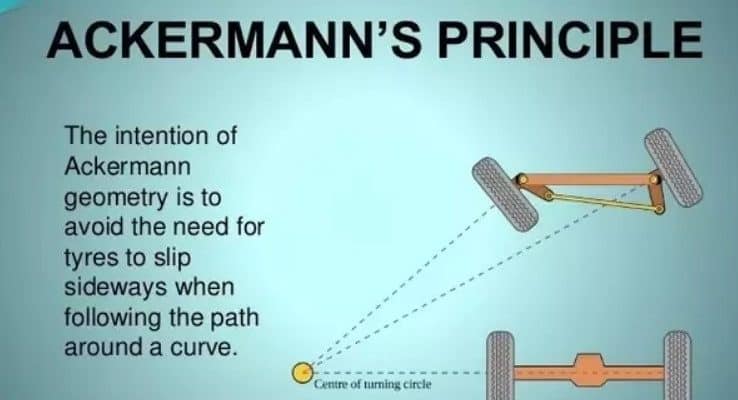Have you ever wondered why the front Wheels of a car move in different angles and directions when you take a turn? It is the Ackerman Steering Mechanism that plays a vital role in ensuring the smooth functioning of the vehicle. Not only that, but it is also required to control the momentum in a definite direction. It does not involve any external force, which is why it is also known as kinematics. The simple process involves the effective steering mechanism controlling the axis of the wheel and the direction of the vehicle in general.
What is Ackerman Steering Mechanism?
The Ackerman Steering Mechanism was first invented by Georg Lankensperger and then applied by Rudolf Ackerman. He uses it in his horse cart by placing two wheels far apart and connecting them with a tie rod. It is an effective 4-bar linkage system that helps in the smooth turning of a car. One wheel independently moves without being dependent on the other. The application focuses on the motion of the links and the direction in which the wheels are turning. It is an effective way to ensure that the car turns without slipping or malfunctioning.
Why Use Ackerman Steering Mechanism- Practical Applications
There is a fixed mechanism for the turning of wheels in the front part of a vehicle. The inner wheel turns faster than the outer wheel, and there can be a possibility of a slip. A wheel has two types of velocities- rotational and translational. When a wheel turns, the shorter wheel has a smaller radius and thus turns faster than the outer wheel. Moreover, the rotational and translational velocities cancel out each other because they become opposite. This is why the slip occurs. In order to avoid this, a different-angle steering mechanism for the front wheel is necessary, which is mainly why Ackerman Steering Mechanism has been developed.
You will find the perfect application of the Ackerman Steering Mechanism in passenger cars and some robotic vehicles. The automotive industry is thriving on this mechanism, mainly because of the smooth functioning of the front wheels of a vehicle. When you turn the steering wheel, the motion is transferred to the steering axis, which, in turn, affects the moving link of the front wheels. The moving link helps to transfer the motion to the connecting link of the wheels, thus quickly changing the direction of the wheels for better performance.
Conclusion
The Ackerman Steering Mechanism has developed over the years and created a vast scope for automotive engineers. Once you understand the mechanism in detail, you can utilize it in every new model of passenger car and robotic vehicle. With the development of technology, this mechanism has also witnessed massive improvements. Moreover, the applications have also increased, making it a critical study in electrical and automotive engineering. The simple physics related to the steering and front Wheels of a car has had significant impacts on the new car models. The engineers keep the steering mechanism in mind so that turning the vehicle becomes much more manageable and hassle-free.
